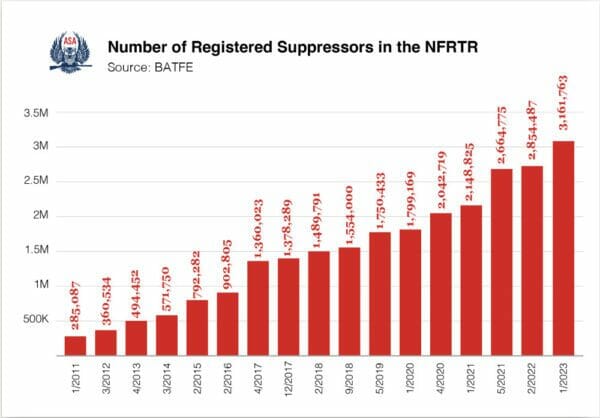Looking Forward to the U.S. Supreme Court Standing Behind Its Bruen Ruling
“A year ago today, the Supreme Court ruled to strip away the rights of a governor to protect her people from concealed carry weapons. We refused to go backwards,” tweeted New York Gov. Kathy Hochul (D) on June 23.
This tweet—and other statements from Gov. Hochul—is an admission she is obstructing a U.S. Supreme Court ruling.
In New York State Rifle & Pistol Association, Inc. v. Bruen, an NRA-backed case, the U.S. Supreme Court affirmed that the Second Amendment protects the right of law-abiding citizens to carry a firearm for personal protection when it struck the “proper cause” requirement in New York’s Sullivan Law.
In doing so, the Supreme Court clearly declared that the government cannot trample on our Second Amendment rights through “abusive” permitting schemes.
Nevertheless, people barely had time to read the Bruen decision before Gov. Hochul and the New York state legislature blatantly stepped all over the ruling with the inappropriately named Concealed Carry Improvement Act.
Although the Concealed Carry Improvement Act doesn’t require citizens demonstrate they have a proper cause to carry firearms, it banned carry almost everywhere with unconstitutional “sensitive-place” restrictions. Also, citizens applying to the state for their constitutional right to bear arms must first take a 16-hour training class, including a two-hour live-fire session. Then they must have an in-person interview with a licensing officer where they must disclose several types of personal information, including all of their social-media accounts. The officer then reviews that information to determine if the applicant has “good moral character,” which is even more subjective than the unconstitutional “proper cause” standard. The licensing officer then has up to six months—unless they want more time, which they will be granted indefinitely—to pore through the applicant’s information to determine if that individual is “eligible” for a license.
When Gov. Hochul was asked where people could carry under the gun-control law, she said “probably some streets.”
As a result, the NRA sued.
The state’s Concealed Carry Improvement Act “replaces one unconstitutional, discretionary law with another unconstitutional, discretionary law,” the NRA lawsuit says. “The [law] contains a slew of burdensome and discriminatory requirements for obtaining a Handgun Carry License—violating the First, Second, Fourth, and Fourteenth Amendments—and an additional slew of restrictions on where and how Handgun Carry License holders may exercise their right to carry arms outside the home.”
Gov. Hochul’s tweet also admits something else. By saying that, in Bruen, the “Supreme Court ruled to strip away the rights of a governor to protect her people from concealed carry weapons,” Gov. Hochul is blaming guns for crimes. She can’t really believe that guns are acting on their own to commit crimes. She likely knows that people (in this case, criminals) commit crimes. So her job is then to protect law-abiding people from violent criminals, not to disarm good citizens who merely want to protect themselves. Given that simple logic, she should next realize that a lot of criminal law (state and federal) gives law enforcement and prosecutors a lot of tools to arrest and put away felons and other prohibited persons who are carrying firearms. It then seems logical that she should focus state resources on the actual problem.
After all, it seems fair to assume that Gov. Hochul is capable of understanding the basic idea that criminals commit crimes and therefore, to prevent more crimes, the state needs to find and prosecute criminals.
The fact that Gov. Hochul has decided to disingenuously virtue signal about crime—by literally blaming good citizens for the actions of criminals—should be clearly said in New York state’s newspapers and on its local news broadcasts. But it isn’t. Too many in the media are also playing this “blame-freedom, not criminals” political game. And this is a shame, as good policy can only come from open and honest debate.
For this reason, the NRA’s court challenge to this unconstitutional law is doubly important.

